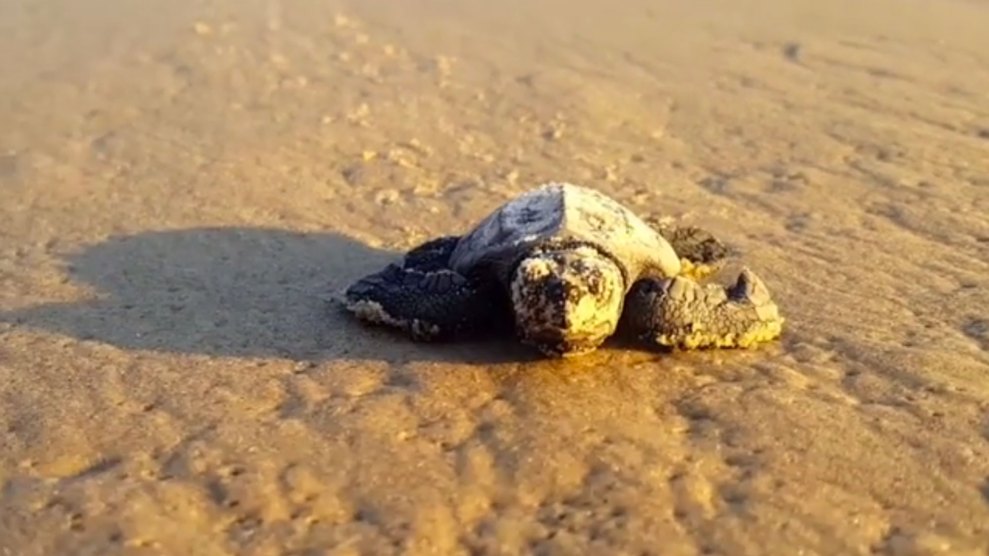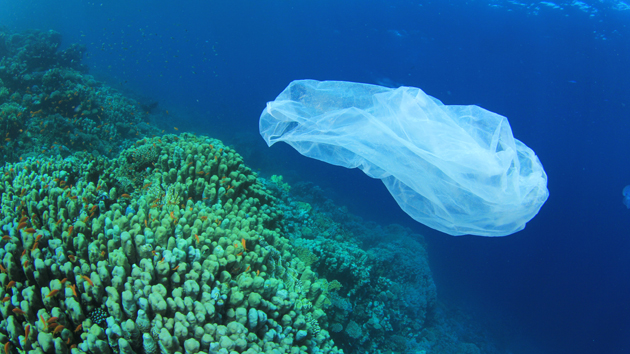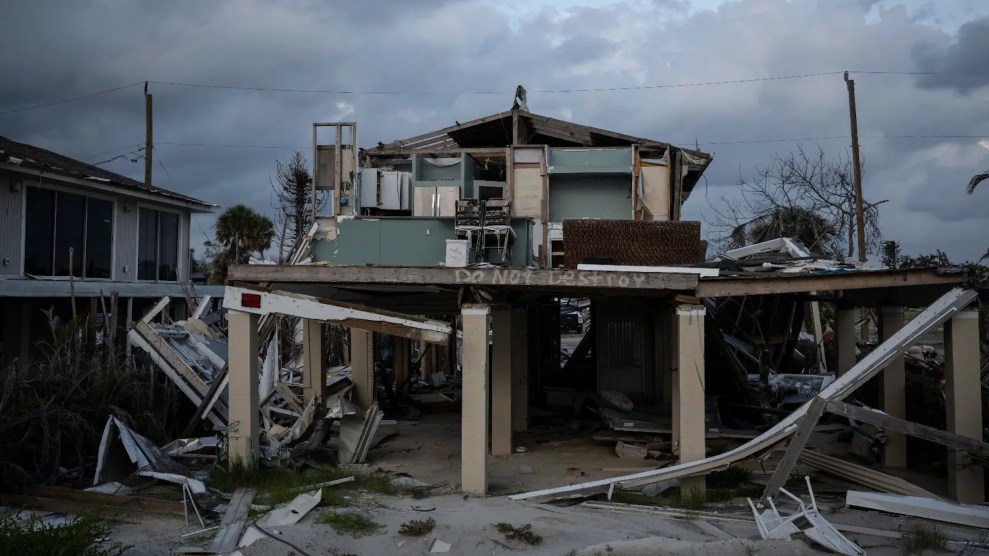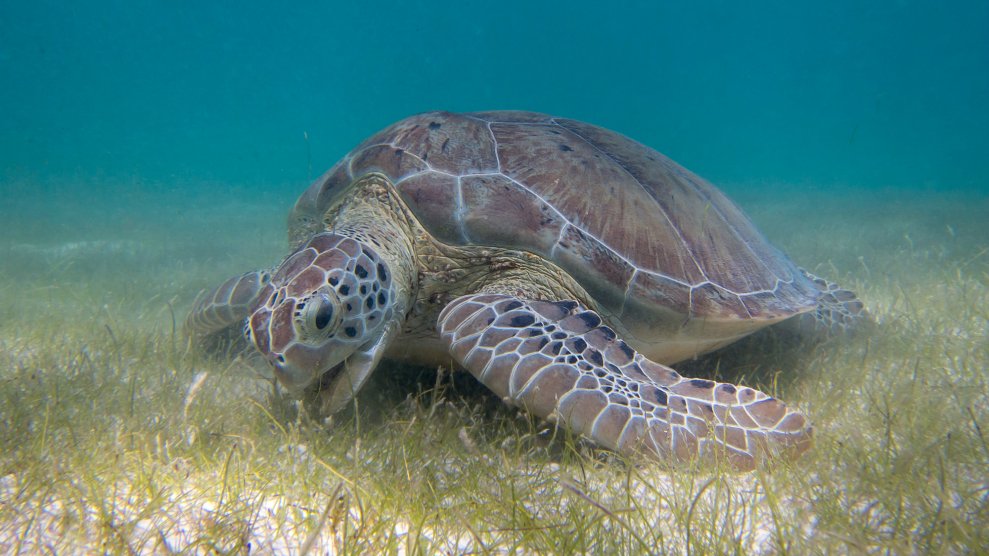
P.Lindgren/Wikimedia Commons
This story was originally published by Atlas Obscura and appears here as part of the Climate Desk collaboration.
Far from shore, the ocean floor is more than an unbroken swath of sand and mud: It can be blanketed with lush, green carpets of seagrass. These wavy expanses are biodiversity hotspots and have significant ecological benefits, but because so little of the ocean has been surveyed and mapped, scientists don’t know exactly where all of these green spaces are. “We know more about the surface of Mars than the ocean floor,” said American Museum of Natural History ichthyologist John Sparks at a recent event at the museum.
There’s a general consensus that these undersea meadows are numerous and widely dispersed in shallow and deeper water alike, since seagrasses can survive on fewer nutrients than some other plants can manage. But grasses growing far beneath the waves often go unstudied compared to those closer to shore. Since green turtles (Chelonia mydas) are known to nibble on seagrasses, researchers at Swansea University trailed them, with the idea that they might lead the way to their sunken grazing grounds.
The scientists tagged turtles with GPS devices when the reptiles clustered to nest on shore, 18 in total. Satellite tracking then helped the researchers follow them—eventually to the Great Chagos Bank, a vast atoll in the Western Indian Ocean. With information about location and depth in hand, divers went to check out where the turtles were headed.
In this remote tract of ocean, the scientists found previously unknown meadows of a seagrass known as Thalassodendron ciliatum. Writing in Marine Pollution Bulletin, the researchers describe the abundance of marine life they encountered there—nearly a dozen fish species, including a large shark.
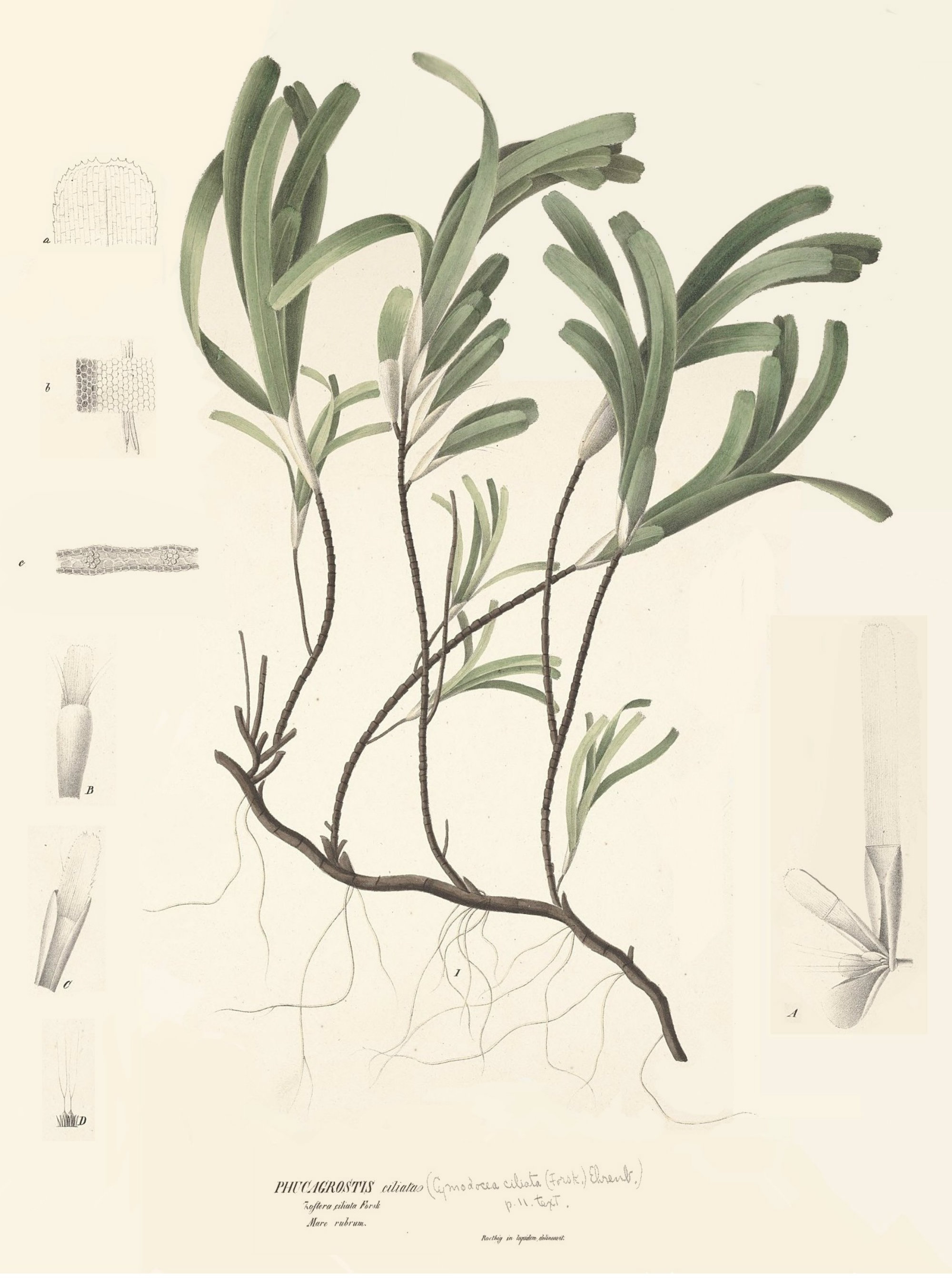
Seagrass is a natural carbon sink, locking it up like terrestrial trees and a host of marine photosynthesizers, including salt marsh grasses, mangroves, kelp, and phytoplankton. One acre of seagrass swallows around 740 pounds of carbon each year, roughly the same amount released into the atmosphere by a car covering 3,860 miles. That adds up to as much as 80 million tons annually.
